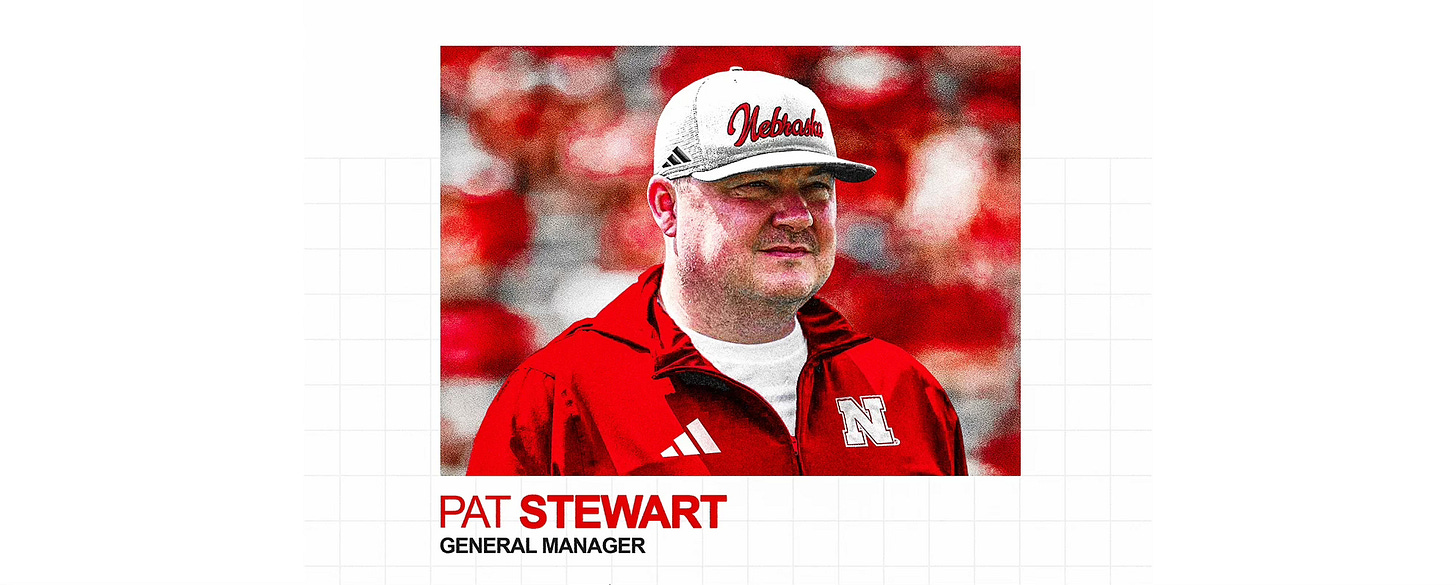Nebraska’s GM investment shows how roster management is evolving
With NIL, the transfer portal and rising salaries, the general manager role has never been more important.
Six days ago, Nebraska football made the hiring of Pat Stewart as its general manager official. Two days ago, his salary information was made available.
And what we know is that Stewart will make $800,000 at Nebraska in 2025. Coach Matt Rhule views the role like any coordinator on staff — offensive coordinator Dana Holgorsen, defensive coordinator John Butler and special teams coordinator Mike Ekeler — which justifies the high salary.1
“It’s like any other coordinator. It’s the same as Dana, it’s the same as Butler, the same as Ek,” Rhule said last week.
Stewart’s hiring also meant a shift in Nebraska’s organizational structure. Sean Padden, who served as the Huskers’ general manager for the past two years, has transitioned into a different role within the program — assistant athletic director for strategic initiatives. The move underscores the increasing importance of the general manager position in college football, which has evolved from a behind-the-scenes advisory role into one of the most powerful jobs in a program’s infrastructure.
It can still be a bit confusing though. Over the weekend, for example, I was asked about the GM role: what is and isn’t normal anymore? How does Stewart compare in the GM landscape across college football?
We know Name, Image and Likeness has shifted how it all works. The GM role is in response to that, but just how much so?
Let’s dive in.
Keep reading with a 7-day free trial
Subscribe to Counter Read to keep reading this post and get 7 days of free access to the full post archives.



